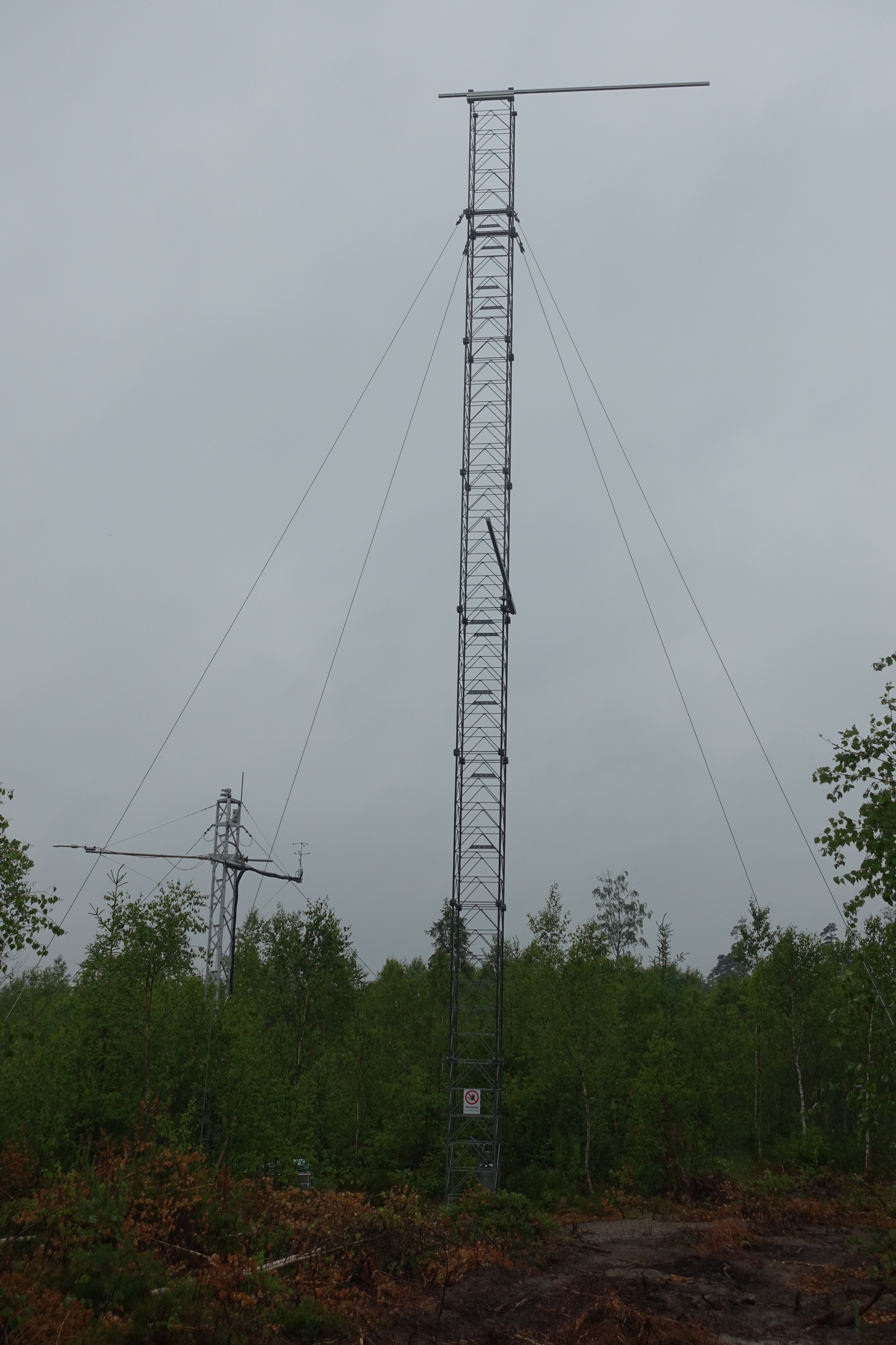At Stordalen, a replanted clear-cut site within the SITES station Skogaryd Research Catchment, a new 16 m high tower has been installed for continues monitoring of greenhouse gas emissions. The tower overlooks a young plantation forest, replacing a smaller tower that has been outgrown by the trees. At Stordalen, researchers from Lund university are measuring the net ecosystem exchange (NEE) of carbon dioxide (CO2) at a clear-cut forest site using the time-tested Eddy Covariance (EC) method. The measurements started in 2012 directly following clear-cutting and have been running continuously since then. As the vegetation grows taller, the tower must be raised for continuous measurements above tree canopy. The tower was already raised in 2015 and now it is time for an even taller tower.

Forests can play an important role in climate change mitigation, as they store huge amounts of carbon in their biomass and soil and thus, can be a sink for atmospheric CO2. Rotation forestry, with clear-cutting and replanting, is the most common silvicultural practice in Sweden, but there is an intense debate about its role in climate mitigation and its ability to contribute to long-term sequestration of carbon from the atmosphere. The clear-cutting at the end of the rotation period causes large emissions of CO2 for several years, as the soil respiration from decomposition of organic matter in the soil exceeds the CO2 uptake by the seedings/young trees. Eventually, the increasing tree growth will return the forest to being a CO2 sink, but many uncertainties remain regarding the recovery time of the carbon balance after clear-cutting. It is crucial to better understand which factors influence the time it takes until the CO2 uptake by photosynthesis equals the emissions by respiration (point of carbon balance) on an annual scale and what additional time is needed before the initial carbon losses are compensated for (carbon compensation point).
Preliminary results for the first decade after clear-cutting, indicate that Stordalen is a large CO2 source to the atmosphere, and has not yet reached the point of carbon balance on an annual basis. Since Stordalen has moist soil conditions, a large fraction of birch trees has been left at the site to help promote the growth of the planted spruce trees. These birches have been partially removed on several occasions. This complicates the data interpretation, and it is important to account for these harvesting operations when assessing the recovery time of the carbon fluxes at Stordalen. Ultimately, the measurements at Stordalen might contribute to the formulation of new ecological and economic goals, management plans and policies that guide the future use of the Swedish forests.